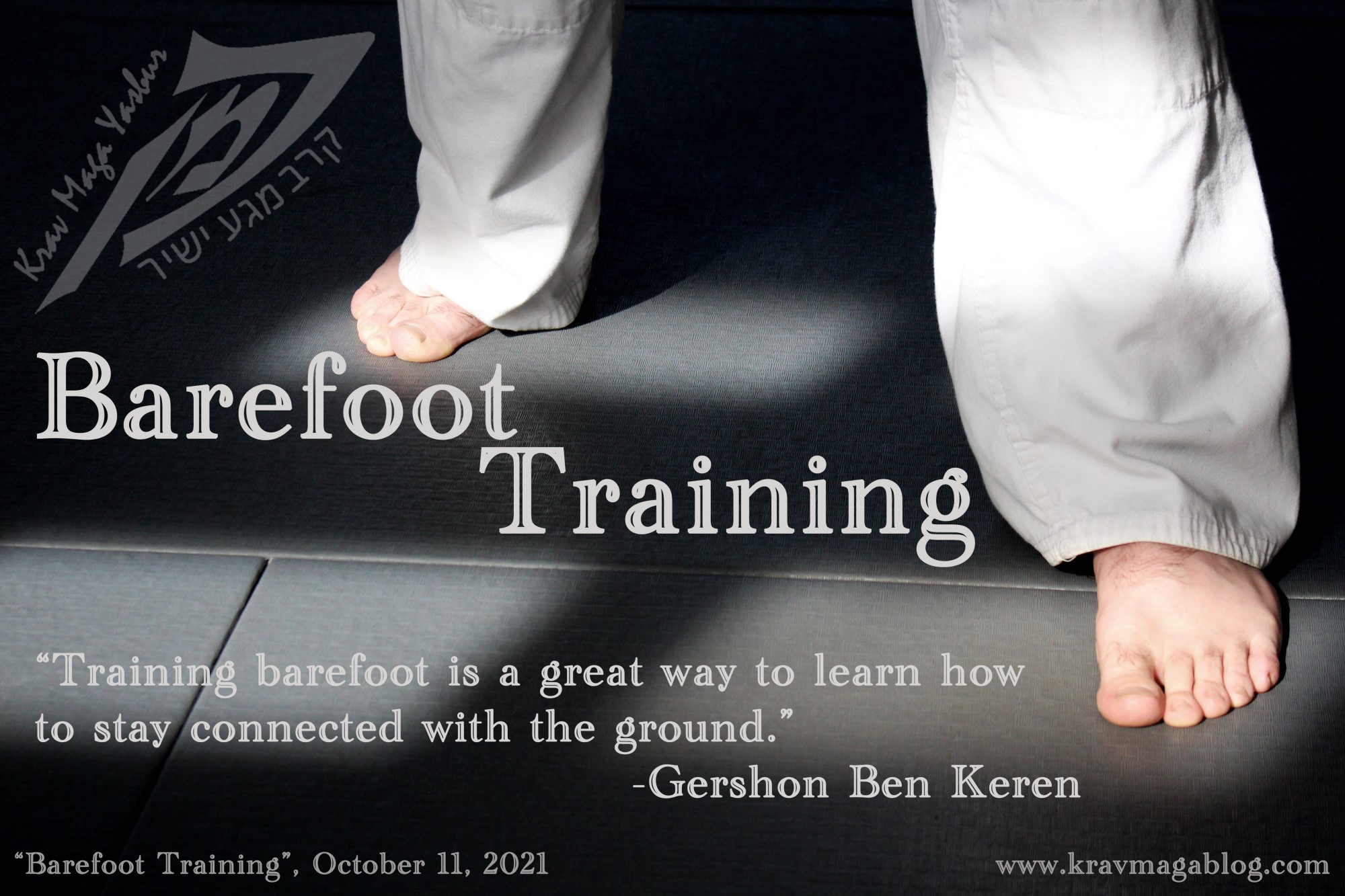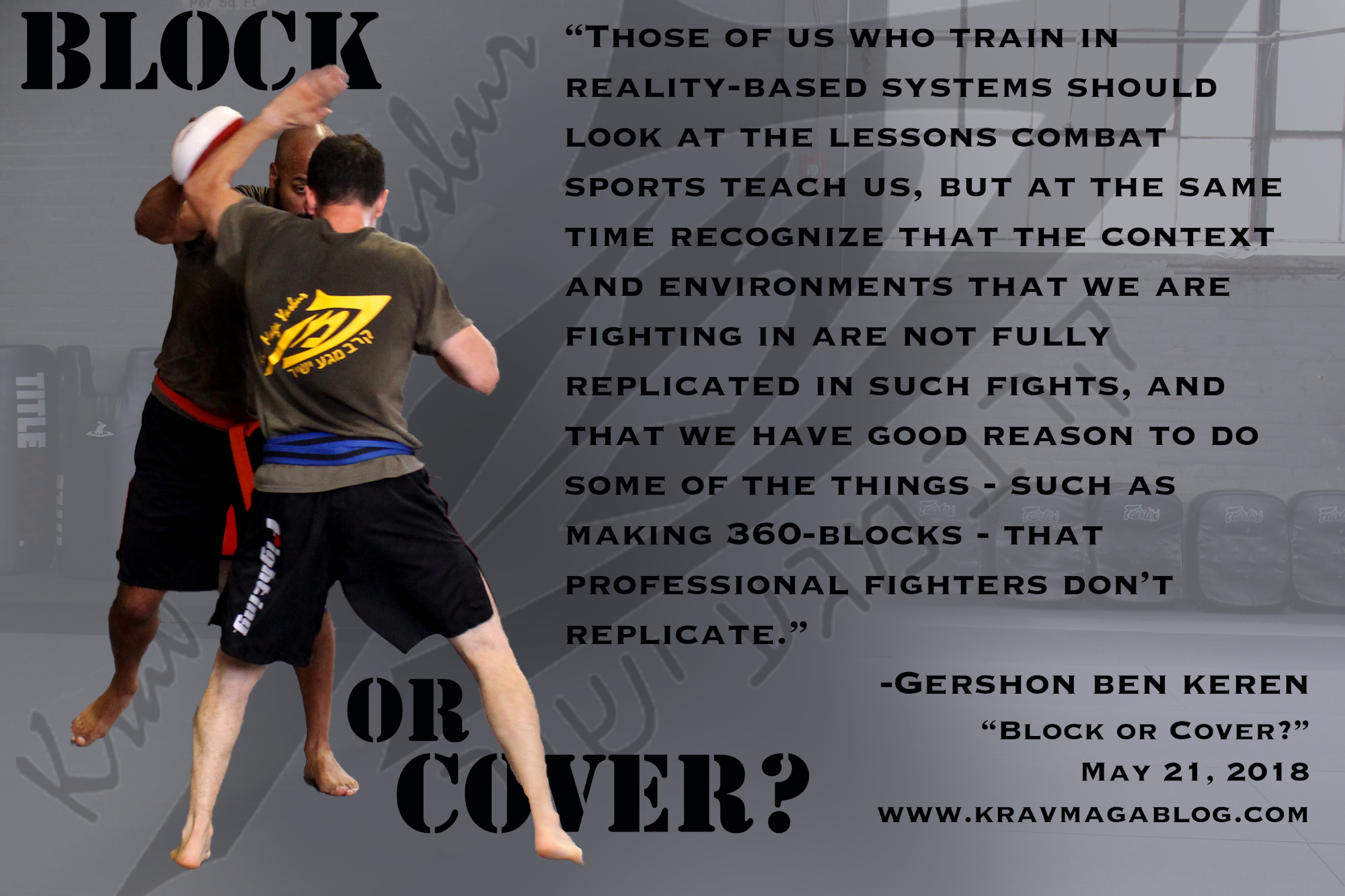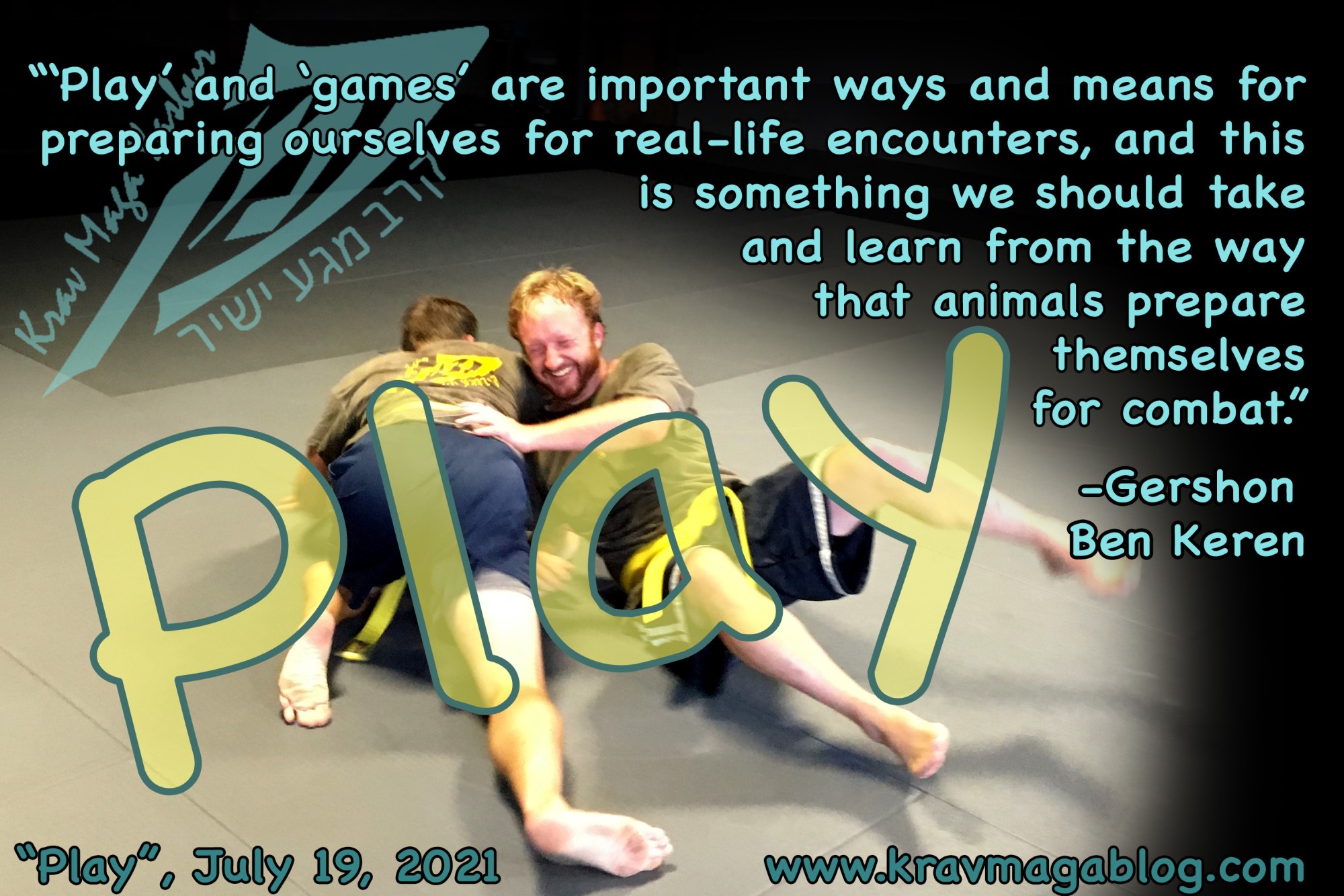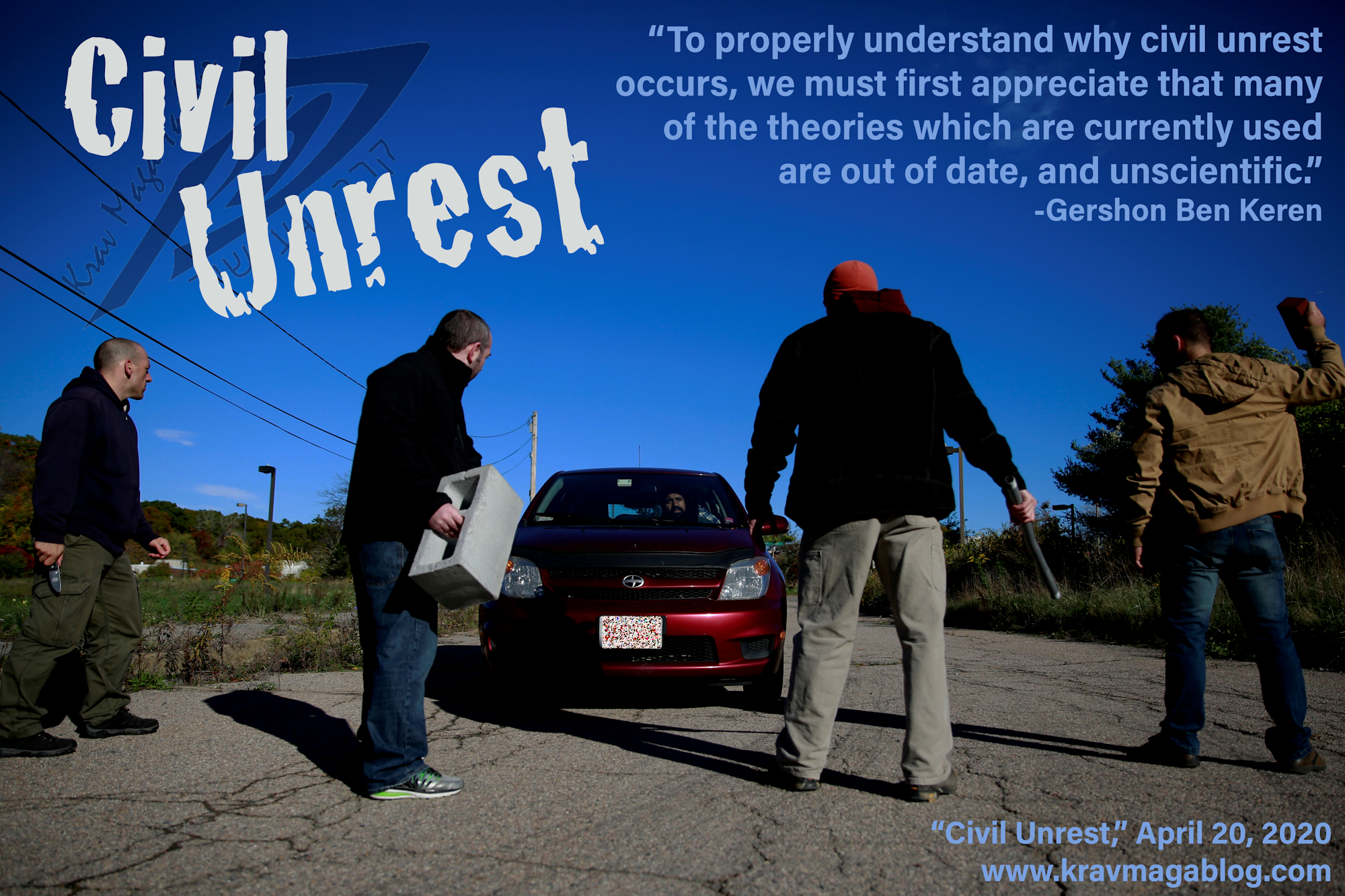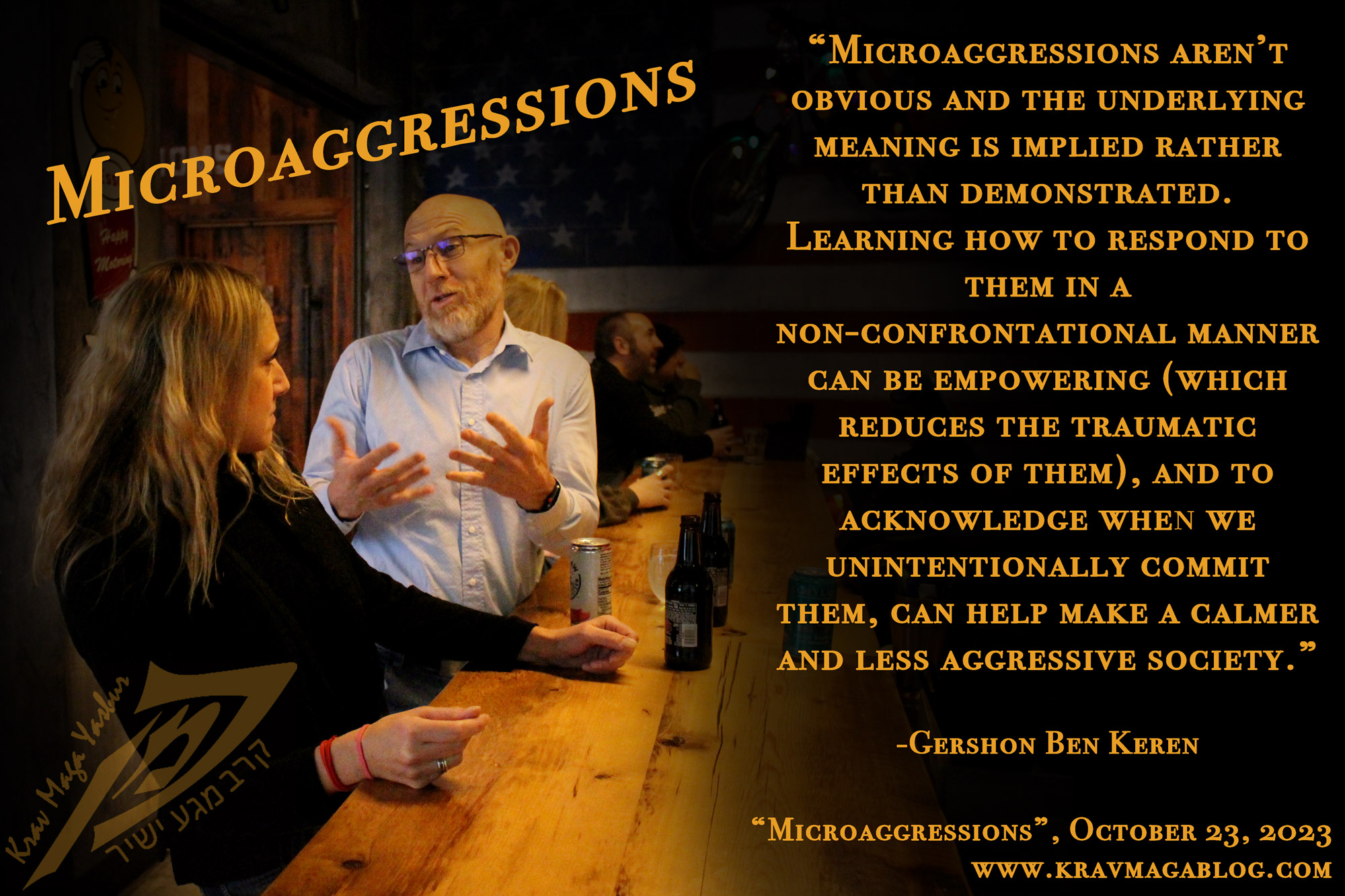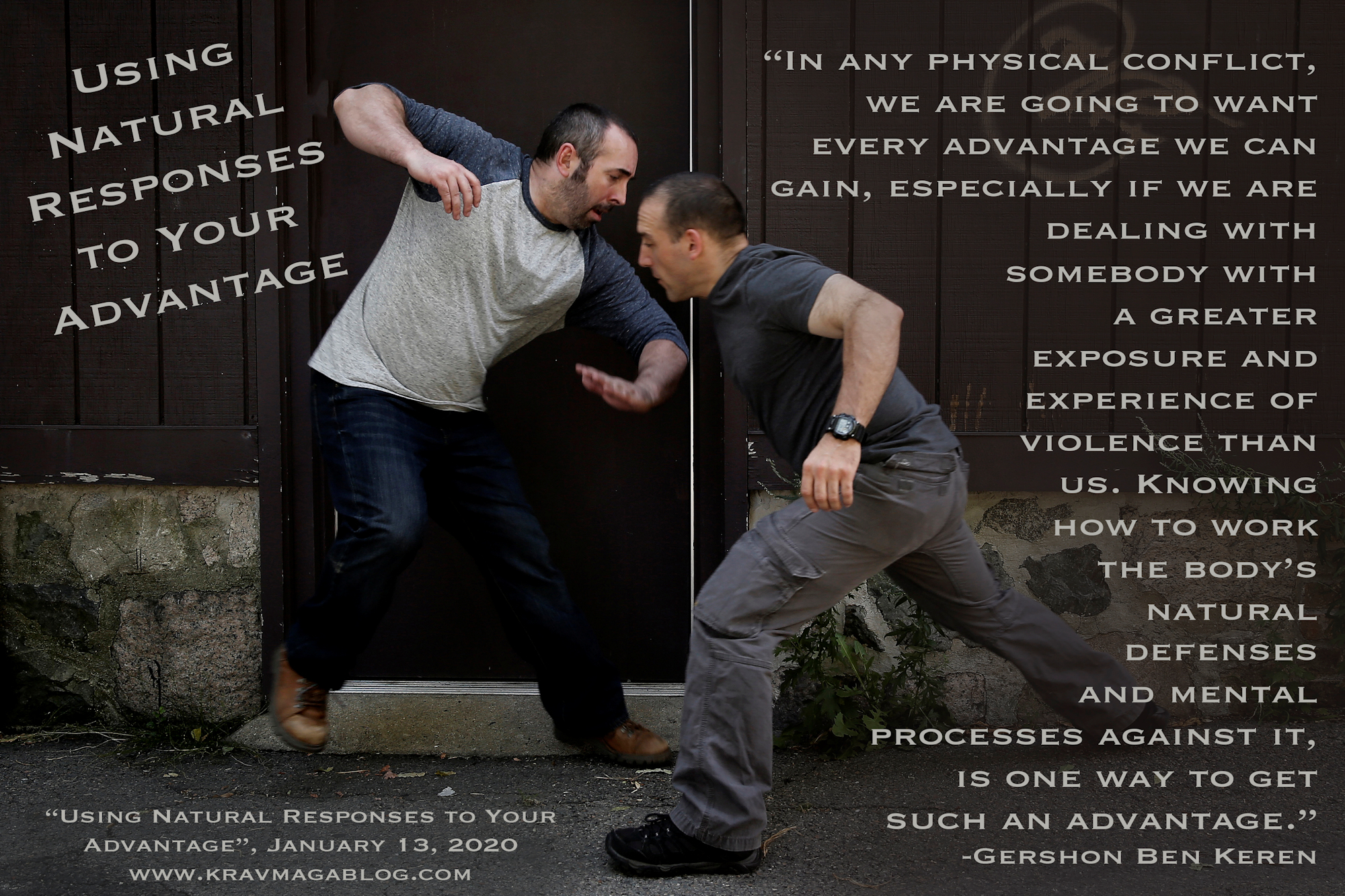Using Natural Responses to Your Advantage, is an article written by Gershon Ben Keren, a 5th Degree Black Belt in Krav Maga, who teaches Krav Maga in Boston, MA. He has also authored three Amazon best-Selling Books on Krav Maga.
One of the things that primarily attracted me to Krav Maga, was the system’s use of natural reflexive movements and responses; using our in-built defenses to deal with certain attacks e.g. if the airway is attacked the hands will automatically come up to try and pull the offending arm(s)/hand(s) away and clear it, etc. Whereas many martial arts and self-defense systems try to get the practitioner to conform their movements to an “artificially” created response, Krav Maga works from the basis of what you will do, rather than what you should do. However, just as I have a natural flinch response, that sees me bring my arm up to protect myself when movement across my peripheral vision is detected – something which is used to initiate a 360/Outside defense – whether it’s a ball being thrown in the park or somebody swinging in a wild haymaker, so does my assailant i.e. they have all the same natural instinctive responses that I have. So, if I throw a strike/kick to the groin, they will naturally pull their hips back, and bring their arms/hands down to defend, just as I would. This means I have to find ways to overcome these responses or learn how to use them to my advantage; in doing so I can also learn how an attacker could take advantage of and use my natural responses against me.
One strike that is often over-used in Krav Maga is the groin kick. Whilst, it is an easy strike to perform on a pad or kick shield, it is not nearly as successful or useful in real-life, as it relies upon several things being in place to get it to work; the target/groin must be exposed/available and a certain range and distance is required to make the kick – you must also overcome your attacker’s natural reflex of pulling the hips/groin back when the movement is first detected. In many cases, groin kicks are practiced in class, as if the attacker is standing square on, with their legs wide apart, and at a distance where the foot can reach the pad/target – in a dynamic, real-life confrontation this type of scenario is rare (most assaults are close-range affairs that start off nose-to-nose, and are characterized by movement) and the groin is likely to be a moving and more discrete target. However, if it does become available as a target for a kick, you increase your chances of success by not aiming to connect with the foot, but with the shin. By aiming the foot about 8-12 inches behind the groin, you will account for any pull back of the hips; if this occurs the foot will connect, if it doesn’t, the shin will.
The other way to use the groin kick is as a feint, to stimulate a response in your assailant that puts them in a disadvantageous position e.g. you could start the movement/kick off, without the intent of following through and striking the groin, in order to bring your assailant’s head forward and down, as they pull their hips back; this now presents you with the head/face as an available target. The same effect can be achieved by forcing an attacker to react to the movement of an initiated punch or strike and following this movement up with another attack, or throwing two strikes close together, forcing an assailant to react to the first, and almost immediately identify and have to deal with the second – in many cases they will get caught in a moment of indecision about which of the two strikes to deal with/prioritize and both strikes will land.
There are also ways to use other non-physical natural phenomenon to increase our chances of success in a situation. When dealing with weapon threats, it is likely that there will be some form of dialogue e.g. a mugger asking for your wallet, and abductor telling you to move, etc. In certain situations, and contexts, it is appropriate to converse with your assailant. What they say and how they say it can provide you with information that will help you discern their intent to use violence, and what you say can create opportunities for you to act, and increase the chances of a physical solution you employ being successful. The brain abhors a vacuum, if it doesn’t have information, it will fill it in with its best guess e.g. a lot of what we see, isn’t actually what is there or what we see, but what our brain “creates” for us based on previous contexts and experiences – a lot of the peripheral background that you see is built and constructed for you, and we have physical blind spots, which our conscious mind fills in so that we see an uninterrupted picture. The brain will do the same thing with sound, and engage in something called phonemic restoration, where it will replace sounds that are out of context with sounds that fit the context e.g. if part of a word should sound a certain way, but doesn’t, our brain will automatically replace the “incorrect” sound, with the “correct” one – our subconscious brain does this before passing the reconstructed word to our conscious. Another process it will engage in is reading ahead. Because we are never truly living in the actual moment, and we are always responding to what we see and what we hear – meaning we are always a few moments behind – our brain employs certain techniques for us to try and get us as close to real time as possible. If somebody starts to ask you a question, your brain, based on past experiences, will be trying to predict what is being said e.g. if after you’ve handed your wallet over to a mugger – and instead of leaving, they stay – start by asking them, “Is there anything…” the subconscious will already be auto-filling the rest of the words e.g. is there anything else I can do/give you/that you want, etc., meaning your assailant will be starting to consciously process the entire sentence/question before you have completed it. If you make your defense/physical movement at the time of saying the third syllable, you will be doing so at the same time as your assailant is starting to process the entire question i.e. your action will occur whilst they are mentally preoccupied, and will be more of a surprise.
By using our assailant’s natural responses against them, we can increase our chances of survival. At the same time we need to recognize how somebody might use these things against us – such as launching an attack mid-sentence when we are preoccupied with processing their dialogue; just because we may know the reason something works, doesn’t mean that others haven’t learnt such tactics from their own experiences, etc. In any physical conflict, we are going to want every advantage we can gain, especially if we are dealing with somebody with a greater exposure and experience of violence than us. Knowing how to work the body’s natural defenses and mental processes against it, is one way to get such an advantage.
0 COMMENTS